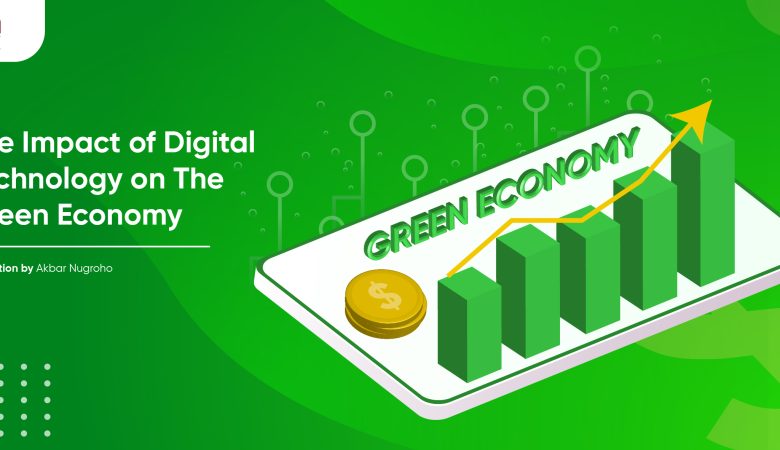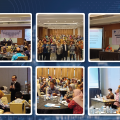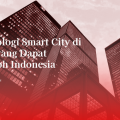Digital technology has gained momentum in the recent decade, with its relationships with digital entrepreneurship, digital economies, digital social interaction, green economies, etc. These have changed the perspective of business and hence digitalized the strategic policies through blockchains. The current study aims to identify such benefits that have changed the day-to-day life processes and procedures for carrying out different tasks due to the convenience of adopting digital technology.
Those benefits have been classified as transparency, centralization, and access to new markets for the organizations considering their consequences, especially when using digital technology. When processes are taking place online, there are fair chances of hiding knowledge about certain products or procedures to gain particular benefits.
The emergence of a “green economy” is now one of the priorities of economic development. The use of digital technologies makes the transition to a “green economy” less expensive while increasing the efficiency of enterprises and companies that use them. The purpose of this study is to show the impact of digitalization on the transition to a “green economy”. To solve this problem, two main research methods were used.
The first research method was a theoretical analysis of the impact of digital technologies on the transition to a “green” economy at various levels: on the city and regional level, using the example of individual industries and enterprises. Among the main areas in which digital technologies are used are the transition to smart cities, the use of digital solutions for the transition to renewable energy sources, and the use of the Internet in agriculture, industry, and transport.
As a second method for researching, a survey to gauge awareness among young people about the importance of the transition to a “green economy” and the problems associated with the transition to a “green economy”, as well as the impact of digital solutions on the transition to a green economy was done.
The Internet of Things and the sharing economy are two specific examples of the impact of digital technologies on the transition to a green economy. The beneficial impact is linked to using technology in the manufacturing process (cutting energy, lowering the number of supplies used), the substitution of virtual goods for physical goods (e-commerce instead of office operations, ebooks rather than physical books), and resource-saving sensors (turning off the light in the absence of people, stopping irrigation after the soil is saturated with water).
Some researchers added to the benefits of digital technologies by claiming that they save assets not only in the manufacturing process (via the use of detectors and monitors) but also in the supply channel through the closing of kiosks and the move to the internet commerce (Su et al., 2021).
Digital technology can start driving green economies in different ways: by reducing the direct environmental impact of ICT production, distribution, operation, and disposal, by reducing toxic materials and waste disposal, by enhancing the speed of production, allocation, and consumption of goods and services in the economy and society as a whole, and by reducing power consumption and decreasing the number of assets, substituting resources.
Striving for `environmental sustainability and resilience` (ESR) is postulated as a crucial, universal, and global challenge of the twenty-first century. Today, this challenge has to be addressed in a world that is dynamic in its societal, economic, and political constituents, heightened by increased interconnectedness resulting from globalization. From a developing country perspective, these issues need to be reconciled alongside developmental priorities, producing ongoing controversies and contradictions. This is further compounded by the fundamental matter of climate change.
Undoubtedly, the many dimensions involved in achieving ESR are complex and dynamic in nature, interconnected across regions of size, space, and location. Therefore, recent academic literature has shown the need for a system-based approach to effectively conceptualize this area in the future. It has been suggested that addressing competing challenges and complexity requires fundamental rethinking and innovation of the approach.
This view is in stark contrast to traditional development approaches that focus primarily on palliative care. One of the areas where related innovation is born in the digital sector. This is what many now call the "digital era" or "digital revolution," and the application of digital technology has recently increased in the context of developing countries. So far, this innovation has integrated a variety of development initiatives, including those that fall under the ESR heading. Evidence of the actual impact of these innovations is inevitably important to justify resources, continue learning, and enable effective progress.
The latest World Development Report, Digital Dividends, examines the impact from a development perspective focused primarily on improving prosperity and inclusion through economic growth, social dynamism, and the provision of public services in developing countries. Similarly, there is an example of a recent review by the UK Department for International Development investigating the impact of digital technology on its own development programs.
However, so far, the work of collating and dealing with existing evidence of assessment, especially from an ESR perspective, seems to be relatively limited. Evidence currently available in these areas appears to be documented primarily at the individual intervention level. Therefore, the purpose of this report was to contribute to this developing area by examining and compiling existing documented evidence.
All results draw similarities and dissimilarities between success and failure, providing a stronger evidence base for the impact of digital innovation on ESR. In addition to the theory of academic innovation, the impact was considered with a particular focus on complexity. This aims to identify emerging themes and gaps to ultimately deduce research-informed policy and to practice relevant lessons moving forward.
Author: Diva Maharani | Illustrator: Akbar Nugroho





